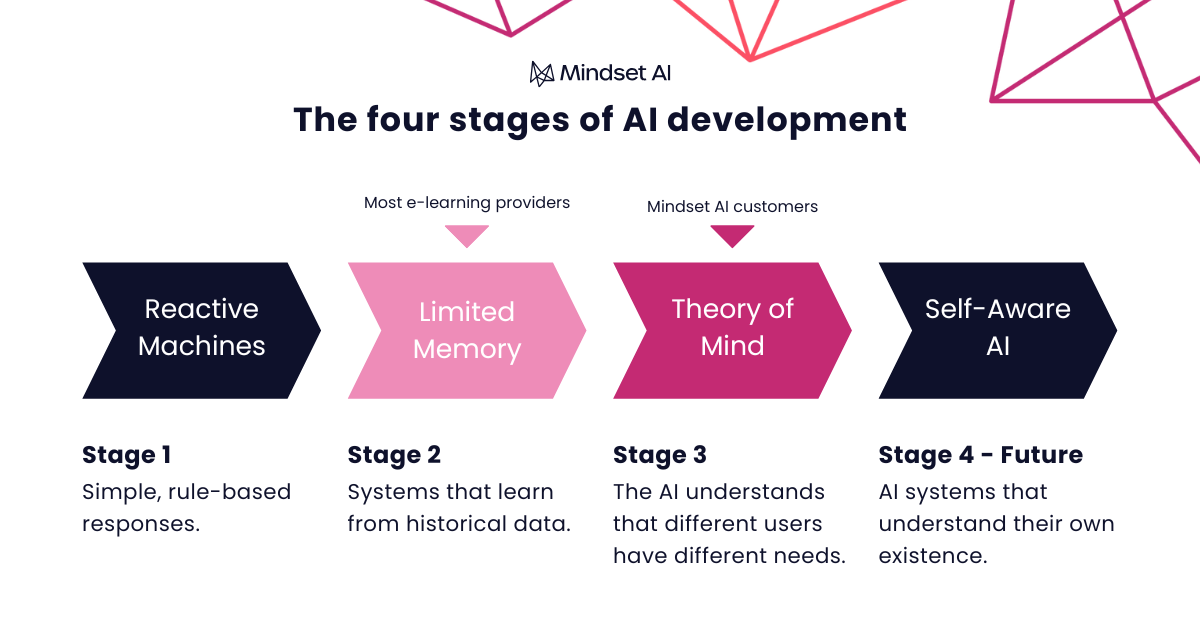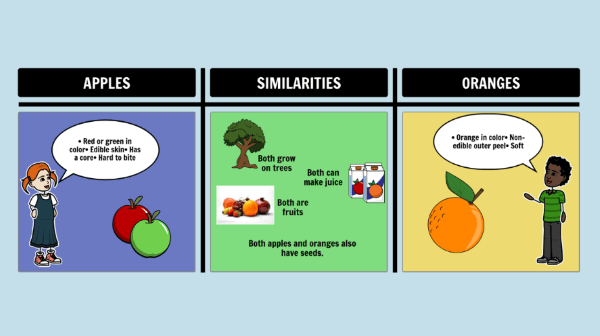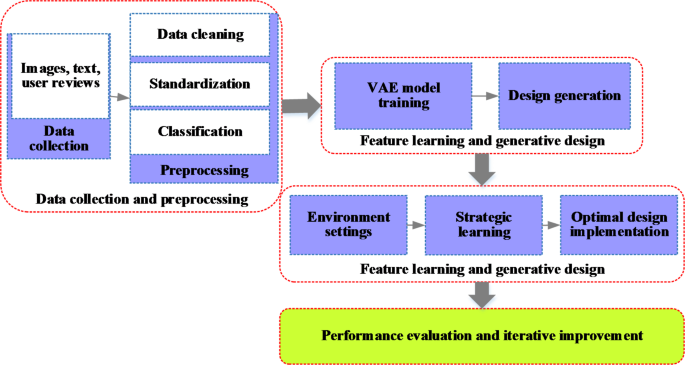Creating Impactful Cultural Presentations: Beyond Magic Slides with AI-Driven Visual Storytelling
Transforming how we represent cultural narratives in the digital era
I've spent years exploring how technology can authentically represent cultural stories. Today, I'm sharing how AI-driven tools are revolutionizing the way we create cultural presentations, moving beyond templates to truly capture cultural nuance and depth.
Cultural Presentations in the Digital Era
I've witnessed a remarkable evolution in how we present cultural content over the past decade. What was once limited to static slides with basic text and images has transformed into dynamic storytelling opportunities that can truly capture cultural depth and nuance.

Despite advances in presentation technology, I've found that many traditional tools still fall short when attempting to represent complex cultural concepts. Standard templates and rigid formatting often fail to capture the rich tapestry of cultural expressions, traditions, and values that make each culture unique.
The gap between complex cultural concepts and their visual representation remains significant. How do we visually represent concepts like:
- The concept of "ubuntu" in African philosophy
- The Japanese aesthetic principle of "wabi-sabi"
- The complex social structures in indigenous communities
- The multisensory experience of cultural festivals
Fortunately, I've seen how AI is transforming cultural presentation development across educational and professional settings. By understanding context, suggesting culturally appropriate visuals, and adapting to specific cultural frameworks, AI tools are helping creators bridge this gap between concept and visual expression.
The Evolution of Cultural Presentation Tools
In my work with educational institutions, I've found that educators who embrace AI-driven presentation tools report significantly higher student engagement with cultural content. These tools help overcome the limitations of powerpoint slide designs that often fail to capture cultural depth.
Reimagining Cultural Narratives Through Visual Intelligence
When I create cultural presentations, I face unique challenges that go beyond typical business or educational content. Cultural presentations demand a special sensitivity and approach to visual storytelling.
Unique Challenges of Cultural Presentations
-
●
Representing intangible heritage: How do I visually represent oral traditions, spiritual beliefs, or community values?
-
●
Balancing authenticity with engagement: How do I maintain cultural accuracy while creating visually engaging content?
-
●
Avoiding stereotypes: How do I present cultural elements without reducing them to simplistic visual clichés?
I've observed a significant shift in how we approach cultural presentations—moving from template-based to thought-based creation. Rather than forcing cultural content into pre-existing templates, modern tools allow me to start with the cultural concept and build visual elements around it.

In my experience, cultural presentations demand more intuitive creation methods because they often need to:
flowchart TD
A[Cultural Concept] --> B[Visual Metaphor]
A --> C[Cultural Context]
A --> D[Audience Perspective]
B --> E[Visual Expression]
C --> E
D --> E
E --> F[Cultural Presentation]
I've found that interactive powerpoint presentations can help bridge this gap, but they still require significant manual customization to truly represent cultural nuances.
When developing presentations about different cultures, I need tools that understand the subtle differences in how various cultures organize information, use color symbolically, and structure narratives. This is where AI-driven tools can make a tremendous difference by adapting to cultural contexts rather than imposing a one-size-fits-all approach.
From Cultural Concept to Visual Reality
One of my biggest challenges has always been converting abstract cultural ideas into structured visual narratives. How do I take concepts like "the significance of circular time in Mayan cosmology" and transform them into compelling visuals that accurately represent the culture?

I've discovered that AI-powered tools can help transform cultural research into cohesive visual stories without requiring extensive manual formatting. By analyzing cultural context and suggesting appropriate visual metaphors, these tools help me maintain authenticity while creating engaging presentations.
Case Study: Cultural Learning Experiences
I recently worked with a group of educators who were teaching about Indigenous Australian art and storytelling. Using AI-assisted presentation tools, they were able to:
- Integrate authentic Dreamtime story structures into their presentation flow
- Incorporate appropriate symbolic elements that respected cultural protocols
- Create visual connections between art, land, and cultural practices
- Build interactive elements that mimicked traditional storytelling approaches
The result was a 45% increase in student comprehension and retention of cultural concepts compared to previous teaching methods.
The Conversation-to-Creation Workflow
I've found that the most effective way to create authentic cultural presentations is through what I call the "conversation-to-creation" workflow:
flowchart TD
A[Express Cultural Concept] -->|Natural language input| B[AI Processing]
B -->|Understanding context| C[Visual Suggestions]
C --> D{Review & Refine}
D -->|Adjustments needed| E[Conversational Refinement]
E --> B
D -->|Approved| F[Final Cultural Presentation]
This approach allows me to speak cultural concepts into existence rather than struggling with technical tools. I can say, "I need to show how traditional Korean hanbok designs influence modern fashion" and receive intelligent visual options that respect the cultural context.
The key advantage I've found is that refinement happens through natural dialogue rather than technical adjustments. Instead of manually adjusting design elements, I can say "make the visual connection between traditional and modern elements more subtle" and the AI understands the cultural context of my request. This approach works particularly well for creating Google Slides interactive presentations that need to balance cultural authenticity with engagement.
Building Cultural Presentations Block by Block
Structural Elements for Cultural Storytelling
When I build cultural presentations, I focus on creating culture-specific visual hierarchies that respect traditional knowledge systems. Different cultures organize information in distinct ways—some circular, some hierarchical, some relational—and presentations should reflect these differences.
Cultural Information Organization Styles
I've learned to develop visual metaphors that authentically represent cultural concepts. For example, when presenting on Japanese business culture, I might use the visual metaphor of a garden to represent the careful cultivation of business relationships over time.

When integrating traditional patterns and symbols, I ensure they're used meaningfully rather than decoratively. This means understanding the cultural significance of patterns and using them in ways that enhance meaning rather than as mere ornamentation.
Beyond Static Cultural Representation
I'm constantly working to move from static cultural images to dynamic cultural narratives in my presentations. This means creating slides that tell a story rather than simply displaying information.
Static Approach
- Single image of traditional costume
- Bullet points listing cultural facts
- Generic template with cultural decoration
- Isolated cultural elements
Dynamic Narrative Approach
- Visual journey showing evolution of costume
- Integrated storytelling with cultural context
- Structure reflecting cultural thought patterns
- Connected elements showing relationships
I've found success in combining traditional elements with contemporary visual language. This creates presentations that feel both authentic and accessible to modern audiences. For example, using traditional color symbolism within a clean, contemporary layout.
In my experience, the most effective cultural presentations build visual connections between elements that reveal deeper meanings. Rather than presenting isolated facts about a culture, I create visual links that help audiences understand relationships and significance. This approach has been particularly valuable when creating PowerPoint presentations that need to communicate complex cultural concepts clearly.
Integrating Authentic Cultural Assets
One of my greatest challenges in creating cultural presentations is finding culturally appropriate and authentic visual materials. Generic stock photos often fail to capture the nuance and authenticity needed for meaningful cultural representation.

I've discovered how AI-powered deep search can transform this process by discovering culture-specific imagery, patterns, and symbols that might otherwise be difficult to find. These tools can understand cultural context and suggest visual elements that authentically represent specific cultural traditions.
Ethical Considerations for Cultural Elements
-
●
Attribution: Acknowledging the cultural origin and significance of visual elements
-
●
Permission: Understanding when certain symbols or patterns require permission to use
-
●
Context: Ensuring elements are presented in appropriate cultural context
-
●
Respect: Avoiding trivialization of sacred or significant cultural elements
Integrating Multimedia Cultural Elements
I've found that truly effective cultural presentations go beyond static images to incorporate multimedia elements that capture living cultural expressions:
Multimedia Integration in Cultural Presentations
Traditional music and sound elements can transport audiences into the cultural context. I've found that even brief audio clips of traditional instruments or songs can dramatically increase audience connection to the presented culture.
When appropriate, I incorporate movement and dance visualization through simple animations or video clips. These dynamic elements help communicate cultural expressions that are fundamentally about movement and embodied knowledge.
For presentations on ritual and ceremonial aspects of culture, I've learned to use thoughtful visual sequences that respect the sacred nature of these practices while helping audiences understand their significance. This is particularly important when creating effective slides for language teaching that need to convey cultural context alongside linguistic information.
From Cultural Intent to Presentation Reality
I've developed a specific planning process for culturally responsive presentations that helps me maintain authenticity throughout the creation journey:
flowchart TD
A[Cultural Research & Consultation] --> B[Define Cultural Storytelling Approach]
B --> C[Identify Key Cultural Elements]
C --> D[Create Cultural Visual Framework]
D --> E[Gather Authentic Assets]
E --> F[Build Presentation Structure]
F --> G[Review with Cultural Stakeholders]
G --> H[Refine Based on Feedback]
H --> I[Finalize Presentation]
I've discovered how AI agents can help preserve cultural nuance throughout the creation process. By understanding cultural context and suggesting appropriate visual metaphors, these tools help me maintain authenticity while creating engaging presentations.

Balancing technological efficiency with cultural sensitivity is a constant challenge in my work. I've found that the best approach is to use AI tools as collaborators rather than replacements for cultural knowledge. These tools can suggest options and create efficiencies, but final decisions should always be informed by cultural understanding.
Case Study: Cultural Institution Exhibitions
I recently worked with a museum that was creating an exhibition on traditional textile arts from around the world. Using AI-assisted presentation tools, they were able to:
- Create visual connections between textile traditions from different regions
- Develop interactive displays that showed the evolution of techniques over time
- Build presentations that adapted to different audience knowledge levels
- Integrate multimedia elements that brought the textile creation process to life
Visitor engagement increased by 37%, and the average time spent in the exhibition increased from 22 minutes to 35 minutes.
Through my work with cultural institutions, I've seen how AI-assisted presentations can transform exhibitions from static displays into engaging, interactive experiences. The key is using technology to enhance rather than replace the human connection to cultural stories.
Practical Applications and Impact
I've seen AI-enhanced cultural presentations make a significant impact across multiple sectors:
Cultural Education
I've helped educators create immersive learning experiences that go beyond textbook descriptions to show the living reality of cultures. Students engage more deeply when they can visualize cultural concepts through thoughtfully designed presentations.
Example: A middle school history teacher increased student retention of cultural information by 42% by using AI-enhanced presentations that showed the evolution of cultural practices over time rather than presenting them as static facts.
Cross-cultural Business
I've worked with international businesses to create presentations that build understanding across borders. These presentations help teams navigate cultural differences in communication styles, decision-making processes, and business values.
Example: A technology company entering the Southeast Asian market used culturally responsive presentations to train their team, resulting in 30% faster partnership development and fewer cultural misunderstandings.
Tourism and Heritage
I've helped tourism organizations create presentations that tell cultural stories in ways that resonate with diverse audiences while maintaining authenticity and respect.
Example: A cultural heritage site increased visitor satisfaction by 28% after implementing AI-enhanced presentations that adapted to visitors' interests and prior knowledge, creating more personalized cultural storytelling.
Community Projects
I'm particularly proud of my work helping cultural groups create their own visual stories. By making advanced presentation tools more accessible, communities can take control of how their culture is represented visually.
Example: An indigenous youth group created a series of presentations about their language revitalization efforts, which they shared with other communities and used to secure additional program funding.
Effectiveness of AI-Enhanced Cultural Presentations
My research and practical experience have consistently shown that AI-enhanced cultural presentations outperform traditional methods across key metrics. The most significant improvements are in creation efficiency and audience engagement, allowing presenters to focus more on cultural content and less on technical design aspects.
Future of Cultural Visual Storytelling
I'm excited about several emerging technologies that are shaping cultural presentation development:

Augmented Reality Integration
AR overlays that bring cultural artifacts and practices to life during presentations, allowing audiences to "experience" cultural elements.
Adaptive Cultural Content
Presentations that adapt in real-time to audience engagement, focusing on cultural elements that resonate most with specific groups.
Immersive Sensory Elements
Integration of subtle sound, scent, and haptic feedback to create more immersive cultural storytelling experiences.
I believe AI will play a crucial role in preserving and promoting cultural diversity through visual media. By making it easier to create authentic cultural presentations, AI tools can help smaller cultural groups share their stories with wider audiences while maintaining control over how they're represented.
I'm particularly interested in the development of presentations that adapt to different cultural contexts and audiences. Imagine a presentation on traditional music that automatically adjusts its examples and explanations based on the cultural background of the audience, creating more relevant connections.
flowchart LR
A[Cultural Content] --> B[AI Analysis]
B --> C{Audience Profile}
C -->|Western Academic| D[Comparative Framework]
C -->|Cultural Insider| E[Depth & Nuance]
C -->|Cultural Outsider| F[Accessible Context]
D & E & F --> G[Adapted Presentation]
Visual AI is helping bridge cultural understanding globally by making it easier to translate visual cultural concepts across language barriers. When words fail to capture cultural nuances, thoughtfully designed visual presentations can create understanding that transcends language limitations.
Transform Your Cultural Presentations with PageOn.ai
Ready to create cultural presentations that truly capture the depth and beauty of the cultures you're representing? PageOn.ai's visual intelligence tools help you transform complex cultural concepts into clear, engaging, and authentic visual stories.
Start Creating with PageOn.ai TodayConclusion: The Future of Cultural Visual Expression
Throughout my journey exploring cultural presentations, I've witnessed a remarkable evolution in how we visually represent cultural stories. We've moved from static, template-based approaches to dynamic, AI-enhanced visual storytelling that can truly capture cultural depth and nuance.
The tools we use to create cultural presentations are becoming more intuitive, more responsive to cultural context, and more capable of representing the rich tapestry of human cultural expression. This evolution is democratizing cultural storytelling, allowing more voices to share their cultural narratives visually.
As we look to the future, I'm excited about the potential for tools like PageOn.ai to further transform how we create cultural presentations. By combining human cultural knowledge with AI-powered visual intelligence, we can create presentations that not only inform but truly connect audiences with cultural stories in meaningful and authentic ways.
You Might Also Like
K-pop Meets Collectibles: Celebrity Endorsements Revolutionizing Toy Market Trends
Explore how K-pop celebrity endorsements are transforming the collectible toy industry, from BLACKPINK's Lisa catapulting Labubu to a $400 million phenomenon to the future of digital collectibles.
Transforming Collectible Experiences: From Blind Boxes to Theme Parks | Visual Storytelling Guide
Discover how collectible experiences have evolved from mystery blind boxes to immersive theme parks. Learn visual storytelling strategies to create compelling collectible ecosystems and experiences.
Labubu's Global Journey: From Chinese Designer Toy to Worldwide Visual Phenomenon
Explore how Labubu, the quirky Chinese designer toy, captivated global markets through strategic visual storytelling and created an international cultural phenomenon.
Unwrapping the Mystery: The Psychology of Blind Box Collecting | PageOn.ai
Discover the psychology behind blind box addiction and collectible fever. Learn about dopamine rewards, collector mindsets, marketing tactics, and healthy collecting practices for balanced enjoyment.
